Best Cuts of Beef to Smoke (and Smoked to Perfection)
on Mar 24, 2023, Updated Jan 01, 2024
This post may contain affiliate links. Please read our disclosure policy.
If you’re looking for the best beef to smoke, there are many choices, and you’ve come to the right place. Grilling out and slow smoking recipes are some of our favorite ways to cook small and large cuts of beef.
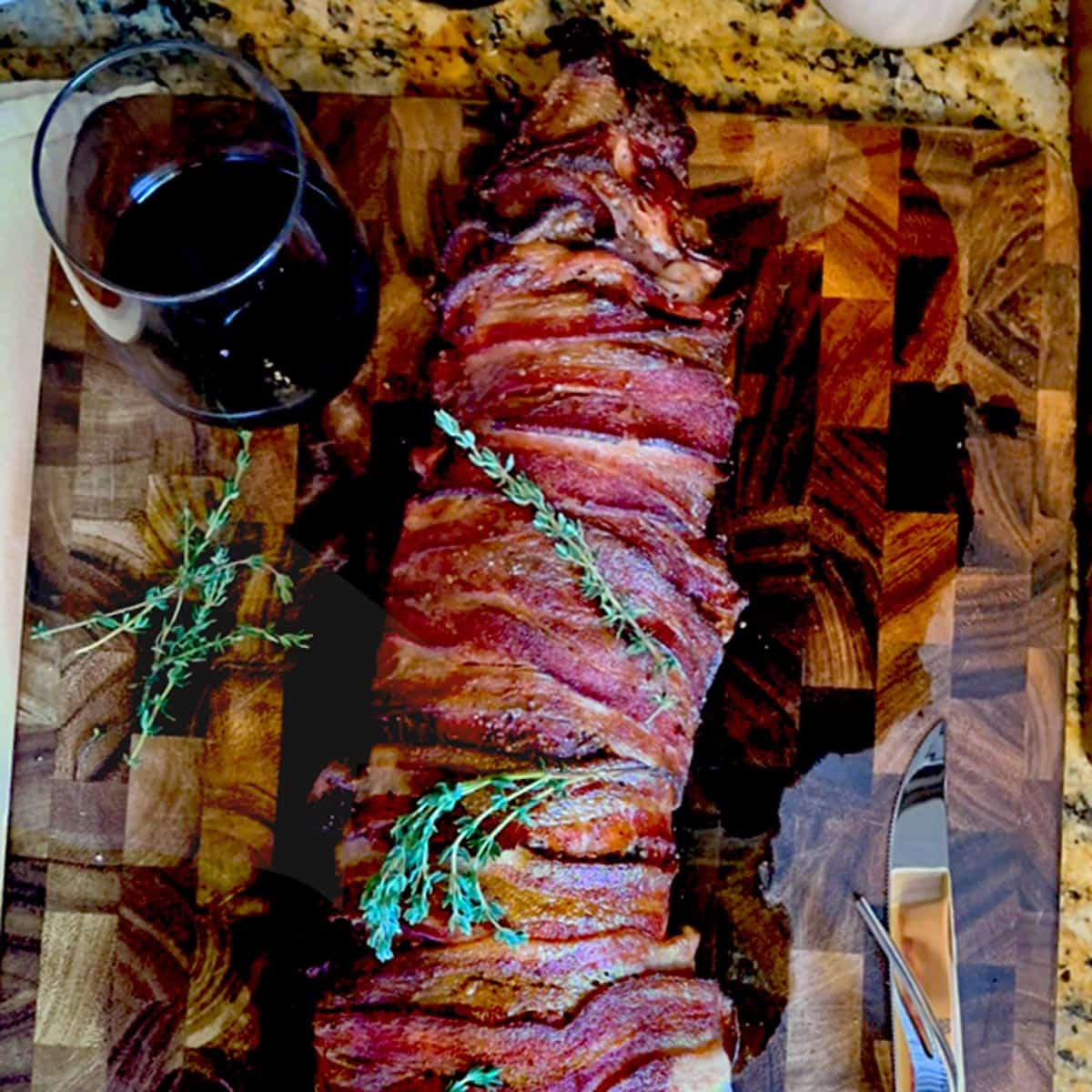
Read on, and we’ll show you how to take a flavorful cut of beef and bring it to a whole new level using different ways of smoking. After it’s smoked, we’ll even show you the best way to reheat brisket, similar to the other cuts of beef used for smoking.
About smoking beef
Table of Contents
Smoking beef is a great way to cook some of the best cuts of beef available, including short ribs, flank steak, prime rib, and top round. Using a smoker is one of our favorite ways to make beef. This smoked tri tip recipe is a perfect example!
It’s hard to explain but I think smoking meat is just plain ole’ fun. Plus, there’s nothing like sinking your teeth into something that just came off your smoker!
These cuts of meat are excellent choices for smoking because they have great flavor and respond well to slow cooking. For many people, brisket is a favorite cut of beef for the best beef for smoking.
Where to get it
I always advise readers to know their source, whether for fruits and vegetables, seafood recipes, meat sources, or even baking products.
If you’re wondering where to buy good beef, a local butcher shop or a farmer that may be a good place to start. Look for organic, grass-fed beef.
If you’re looking for convenience, then Snake River Farms is an excellent source for the best beef to smoke. Not only is their quality extremely high, but they’ll also deliver it directly to your door! How handy is that?!
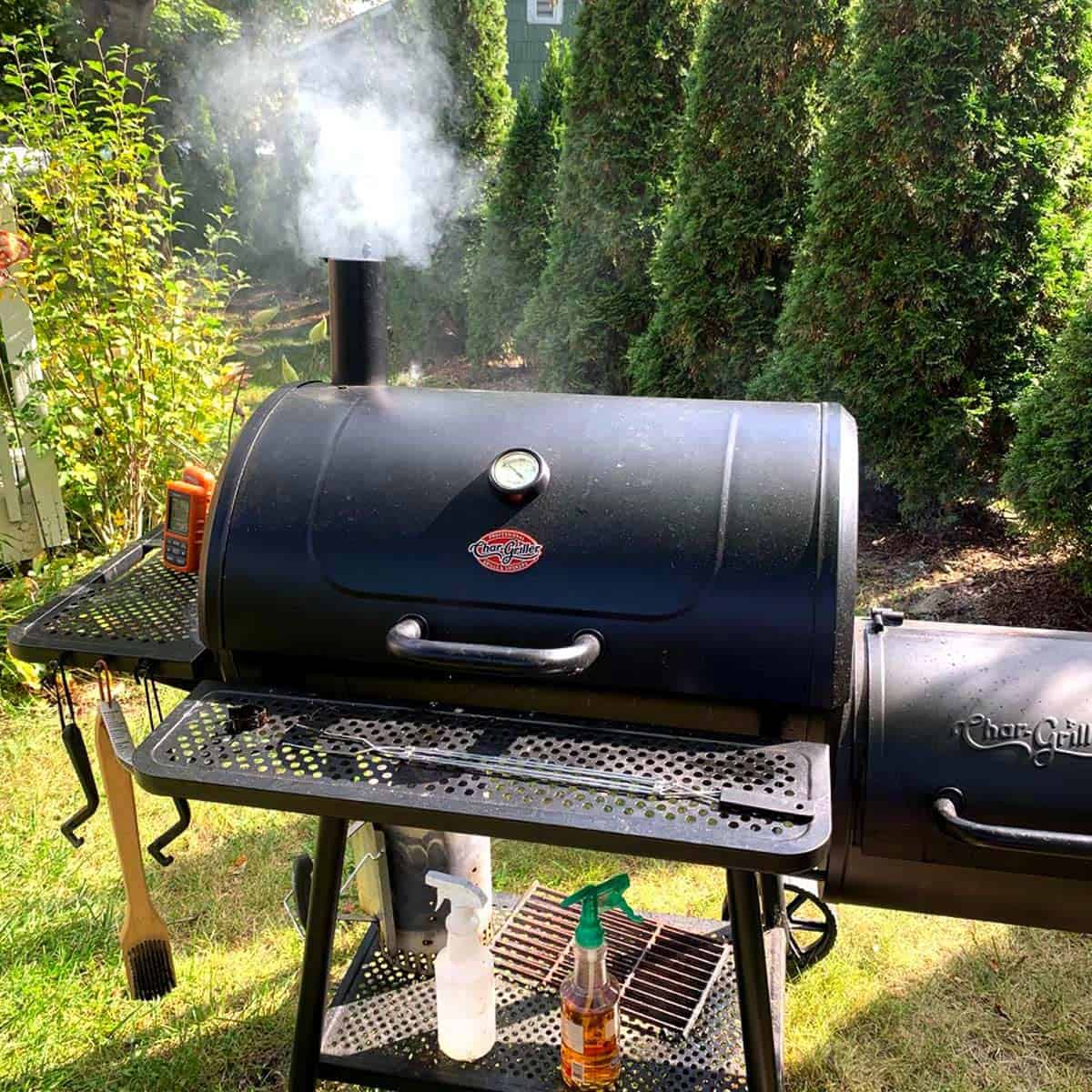
The cooking process involved in smoking allows the meat to cook at a low temperature for a long time, resulting in a tender and flavorful piece of meat. This makes it an excellent option for tougher cuts of meat, such as pork butt or spare ribs, which can benefit from the high heat and longer cook time.
Additionally, smoking beef allows for flavor customization with different types of wood chips, making it a great way to experiment with different flavor profiles. Different woods can be found at your local meat store or big box stores like Home Depot or Lowes. Usually, it’s just a matter of personal preference or what you have on hand to determine which wood chips are the best choice for a particular cut of meat.
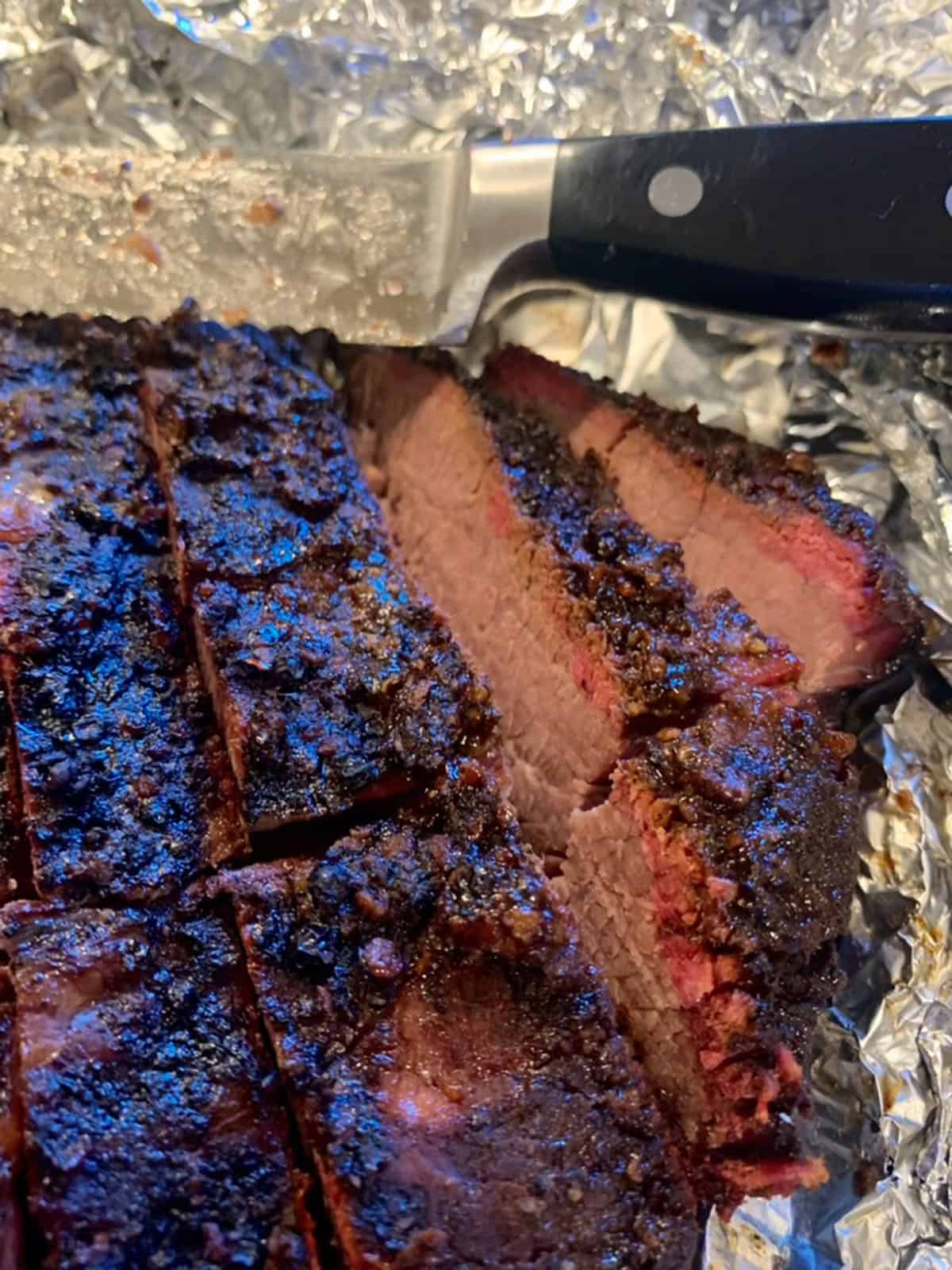
Smoking is also a great way to cook leaner cuts of meat, as the slow cooking process allows the meat to remain juicy and flavorful. The triangular shape of cuts like flank steak and top sirloin make them great candidates for smoking, as they cook evenly and have a great surface area for the smoke to penetrate.
The smoke flavor infused into the meat during the smoking process is one of the best things about smoking beef. It adds a depth of flavor that you can’t get from other cooking methods. This is why it is a great way to elevate the taste of your favorite cuts of beef.
Whether using a pellet smoker, electric smoker, or traditional offset smoker, smoking beef can be a great way to cook your favorite cuts of meat.
With good marbling and the proper cook time, even the toughest cuts of beef, like chuck roast, can become a flavorful and tender meal after long hours of smoking. Overall, smoking beef is a better choice for anyone looking for a great way to enhance the flavor of their favorite cuts of meat. Read on and we’ll look at the best beef for smoking.
Smoking brisket
Many people think that brisket is the best beef to smoke, making it one of the most popular cuts of beef for smoking. In my humble opinion, I make a great smoked brisket flat; it’s one of my favorite beef recipes.
Brisket comes from the cow’s chest, a tough cut of meat with a lot of connective tissue. This might not sound very appetizing, but it makes brisket great for smoking.
When you smoke meat, you cook it at a low temperature for a long time. This breaks down the connective tissue and makes the meat tender and juicy. Brisket has a lot of connective tissue, so it takes a long time to cook, but the end result is mouthwatering.
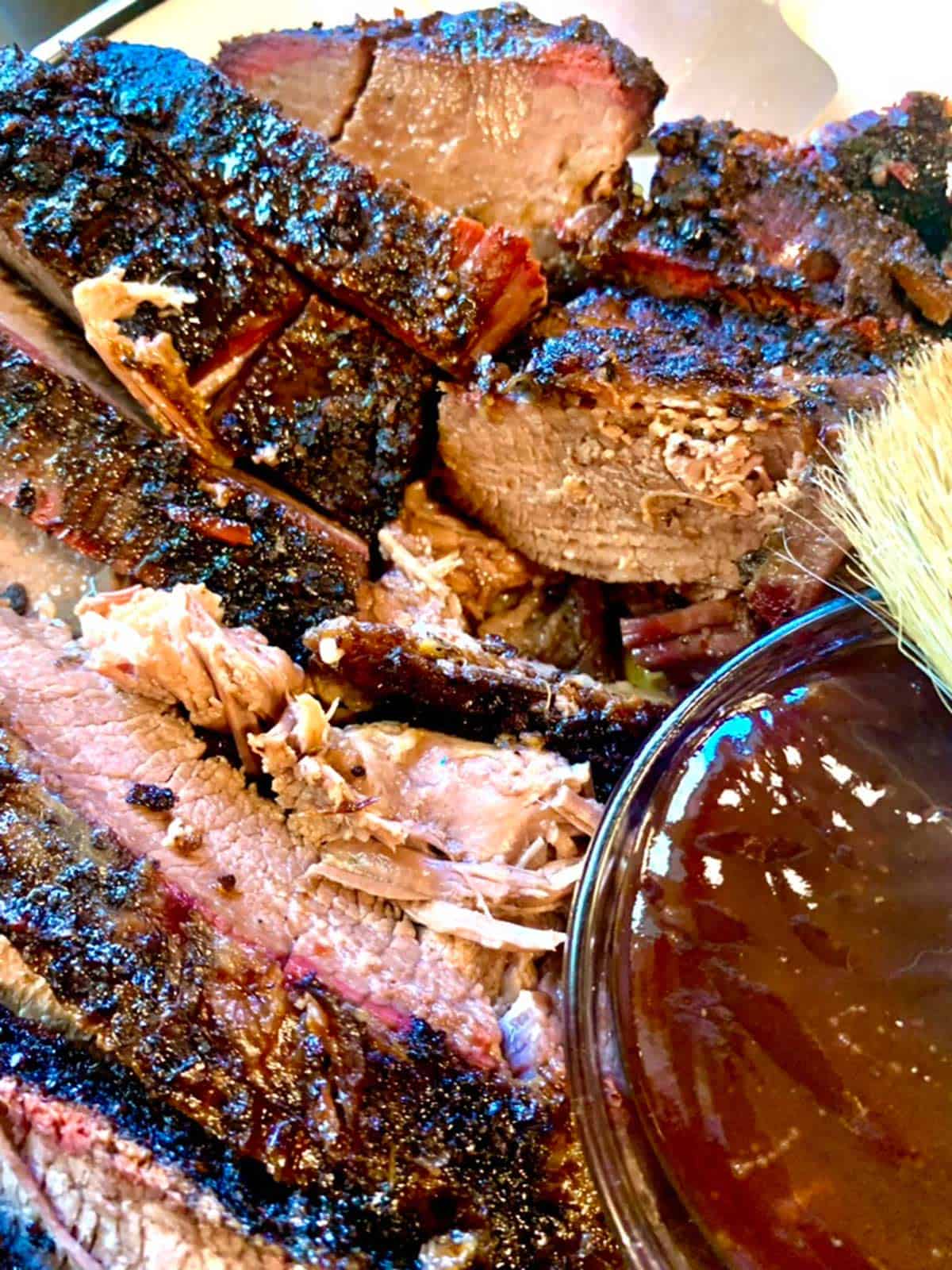
Tip Tips for Smoking Brisket
- Choosing the right brisket: Look for a brisket with good marbling, a consistent thickness, and a weight of around 10-14 pounds.
- Preparing the brisket: Trim the brisket of excess fat, and apply a dry rub made of kosher salt, black pepper, and garlic powder to enhance the flavor.
- Setting up the smoker: Preheat the smoker to 225-250°F and add wood chips or chunks for smoke flavor. Place a drip pan underneath the brisket to catch any drippings.
- Smoking the brisket: Place the brisket on the smoker with the fat cap facing up, and let it smoke for 6-8 hours or until it reaches an internal temperature of 160-170°F. Then, wrap the brisket in aluminum foil or butcher’s wrap and continue cooking until it reaches an internal temperature of 200-205°F.
- Resting and slicing the brisket: Remove the brisket from the smoker and let it rest for 30-45 minutes. Slice against the grain and serve with your favorite barbecue sauce.
If you want the best beef to smoke and you’re going with a brisket, head on over to Aaron Franklin’s site to learn how to smoke a brisket. The first brisket I ever smoked was in an electric smoker using his technique. It turned out awesome!
Finally, here are some good tips to give you an idea of how much brisket you need when having people over for a cookout.
Beef Ribs for Smoking
Another great cut of beef for smoking is called beef ribs. Beef ribs come from the same part of the cow as brisket, but they’re a little bit easier to cook because they don’t have as much connective tissue. They still take a long time to cook, but they’re a little bit more forgiving than brisket.
If you’re a fan of ribs, you may find this is the best beef to smoke. And the variety of bbq sauces for beef ribs is endless!
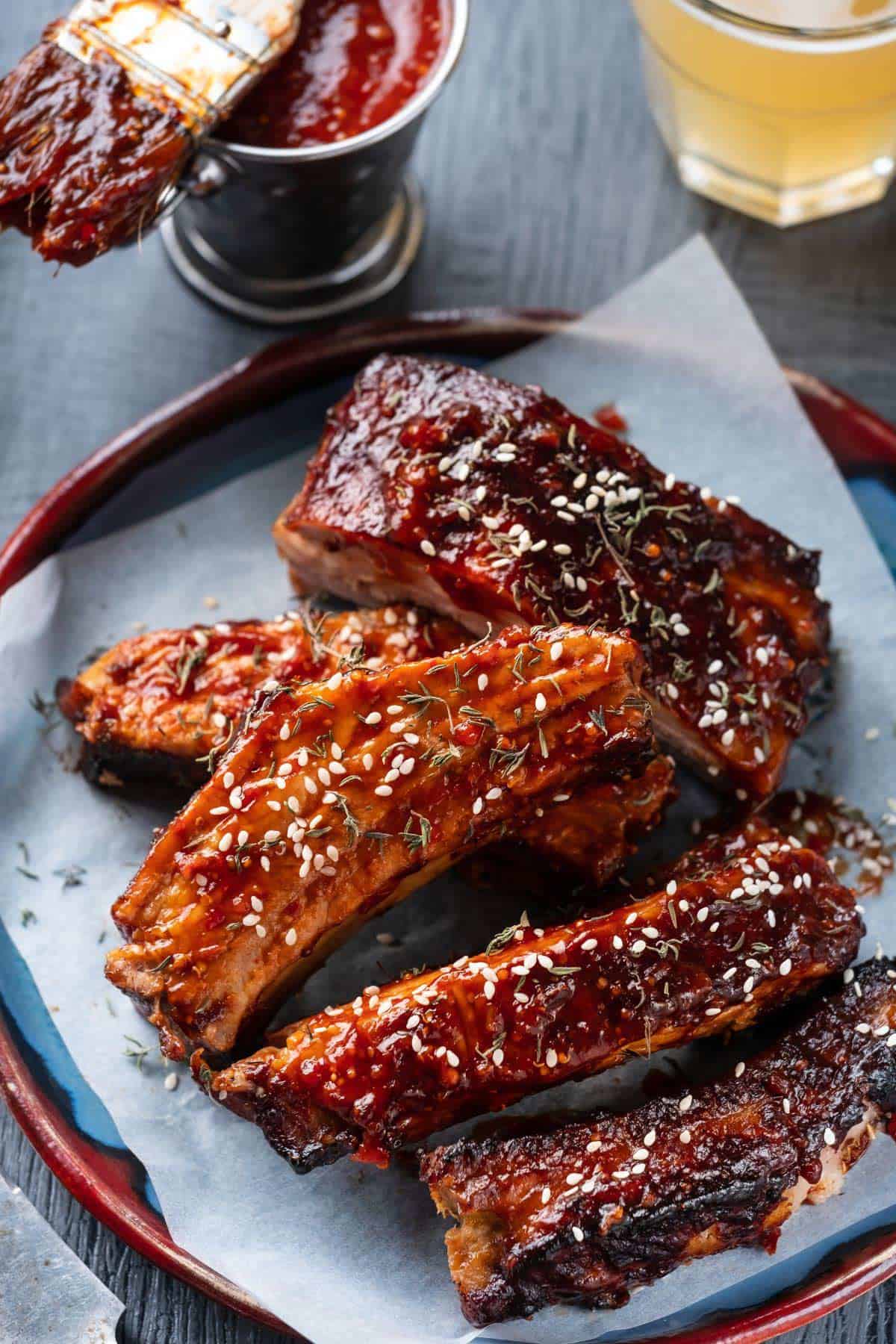
Top Tips for Smoking Beef Ribs
- Choosing the right beef ribs: Look for beef short ribs or beef back ribs that are meaty and have a good amount of fat for flavor.
- Preparing the beef ribs: Trim any excess fat and apply a dry rub made of kosher salt, black pepper, garlic powder, and brown sugar to enhance the flavor. You can also use a marinade or injection for extra flavor.
- Setting up the smoker: Preheat the smoker to 225-250°F and add wood chips or chunks for smoke flavor. Place a drip pan underneath the beef ribs to catch any drippings.
- Smoking the beef ribs: Place the beef ribs on the smoker with the bone side down, and let them smoke for 4-5 hours or until they reach an internal temperature of 200-205°F. You can wrap the ribs in aluminum foil during the last hour of cooking to help them cook faster and stay moist.
- Resting and serving the beef ribs: Remove the beef ribs from the smoker and let them rest for 10-15 minutes before slicing and serving with your favorite barbecue sauce. The beef ribs should be tender and flavorful, with a smoky crust on the outside.
Beef Chuck Roast for smoking.
Another cut of beef that’s great for smoking is called a beef chuck roast. This cut comes from the shoulder of the cow and is a little bit fattier than brisket or beef ribs. This extra fat helps keep the meat moist and juicy as it cooks, so it’s a great choice for smoking. This is usually a very inexpensive cut that you can get at any grocery store, making it the best beef to smoke for many.
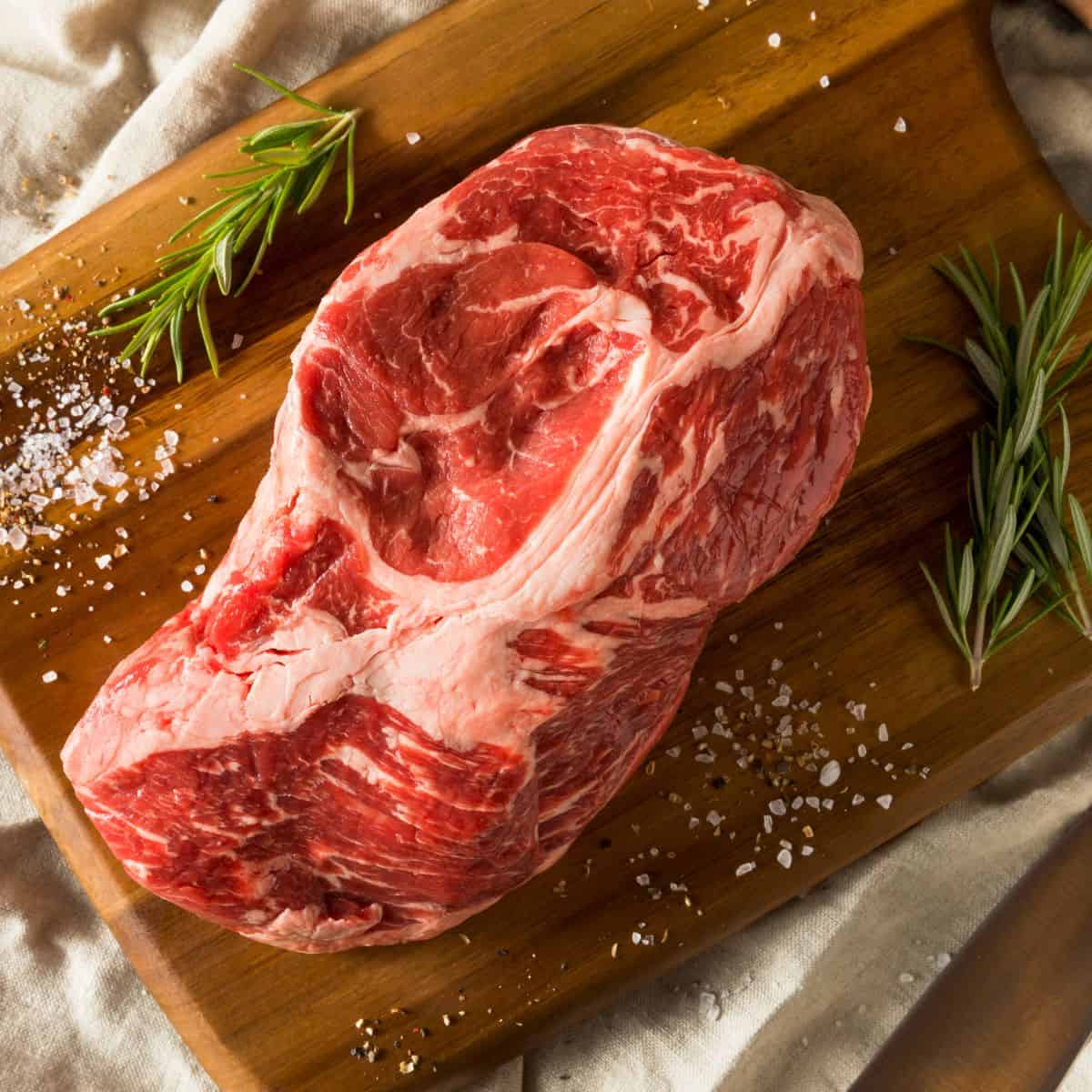
Top Tips for Smoking a Chuck Roast
- Choose the right chuck roast: Look for a chuck roast with good marbling, a consistent thickness, and a weight of around 3-5 pounds. A chuck roast with extensive fat marbling will result in a more flavorful and tender final product.
- Prepare the chuck roast: Trim any excess fat and apply a dry rub made of kosher salt, black pepper, garlic powder, and paprika to enhance the flavor. You can also use a marinade or injection for extra flavor. Let the chuck roast sit at room temperature for about 30 minutes before smoking.
- Set up the smoker: Preheat the smoker to 225-250°F and add wood chips or chunks for smoke flavor. Place a drip pan underneath the chuck roast to catch any drippings.
- Smoke the chuck roast: Place the chuck roast on the smoker with the fat cap facing up, and let it smoke for 4-6 hours or until it reaches an internal temperature of 160-170°F. Then, wrap the chuck roast in aluminum foil and continue cooking until it reaches an internal temperature of 200-205°F. This slow smoking process will allow the meat to become tender and juicy.
- Rest and serve the chuck roast: Remove the chuck roast from the smoker and let it rest for 30-45 minutes. This resting period will allow the juices to redistribute and make the meat more tender. Slice the chuck roast against the grain and serve with your favorite barbecue sauce. The chuck roast should be tender and flavorful, with a smoky crust on the outside.
This is an excellent recipe for making smoked chuck roast that our family loves to make.
So there you have it! When it comes to the best beef to smoke, brisket, beef ribs, and beef chuck roast are all great choices. They have enough connective tissue to make them tender and juicy when cooked slowly at a low temperature, and they’re full of delicious beefy flavor.
Expert Tip: You need an accurate thermometer for the best way to smoke beef. I recommend the Thermapen One from Thermoworks. It’s very accurate (within 1/2 degree F.), super fast (one second), has an awesome backlight making it easy to read, and it is back with a five-year warranty! Seriously, what more can you ask for in a thermometer?!
What beef isn’t good for smoking?
Now, you might be wondering why these cuts of beef are better for smoking than other cuts, like steak or ground beef. The main reason is that smoking is a slow-cooking method, and it works best with cuts of meat that have a lot of connective tissue. When you cook these cuts at a low temperature for a long time, the connective tissue breaks down and turns into gelatin, which makes the meat tender and juicy.
Steak and ground beef, on the other hand, are better cooked quickly at a high temperature. If you try to smoke a steak or ground beef, it will get tough and dry because it doesn’t have enough connective tissue to break down.
So there you have it! When it comes to smoking beef, brisket, beef ribs, and beef chuck roast are all great choices. They have enough connective tissue to make them tender and juicy when cooked slowly at a low temperature, and they’re full of delicious beefy flavor.
Expert tips for smoking beef
One of the best ways to smoke beef is to start with a dry brine. Mix kosher salt, black pepper, garlic powder, and brown sugar in a bowl and rub it into the meat, then let it sit at room temperature for a few hours. This will help the meat absorb the dry rub and develop a unique flavor.
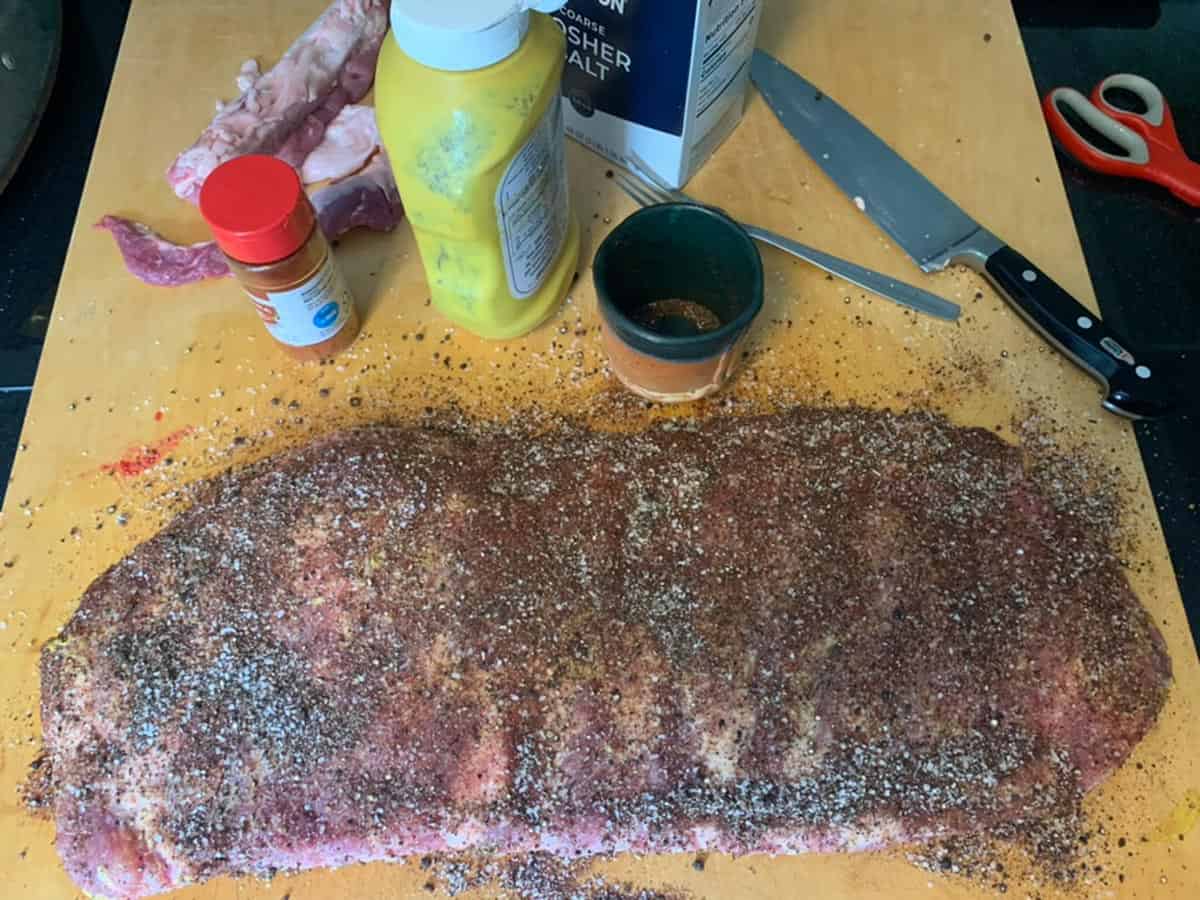
Next, set up your smoker with wood chips of your choice. Different types of wood will impart different smoke flavors, so it’s a good idea to experiment with a few to find your favorite. Pellet smokers and electric smokers are also great options for smoking beef.
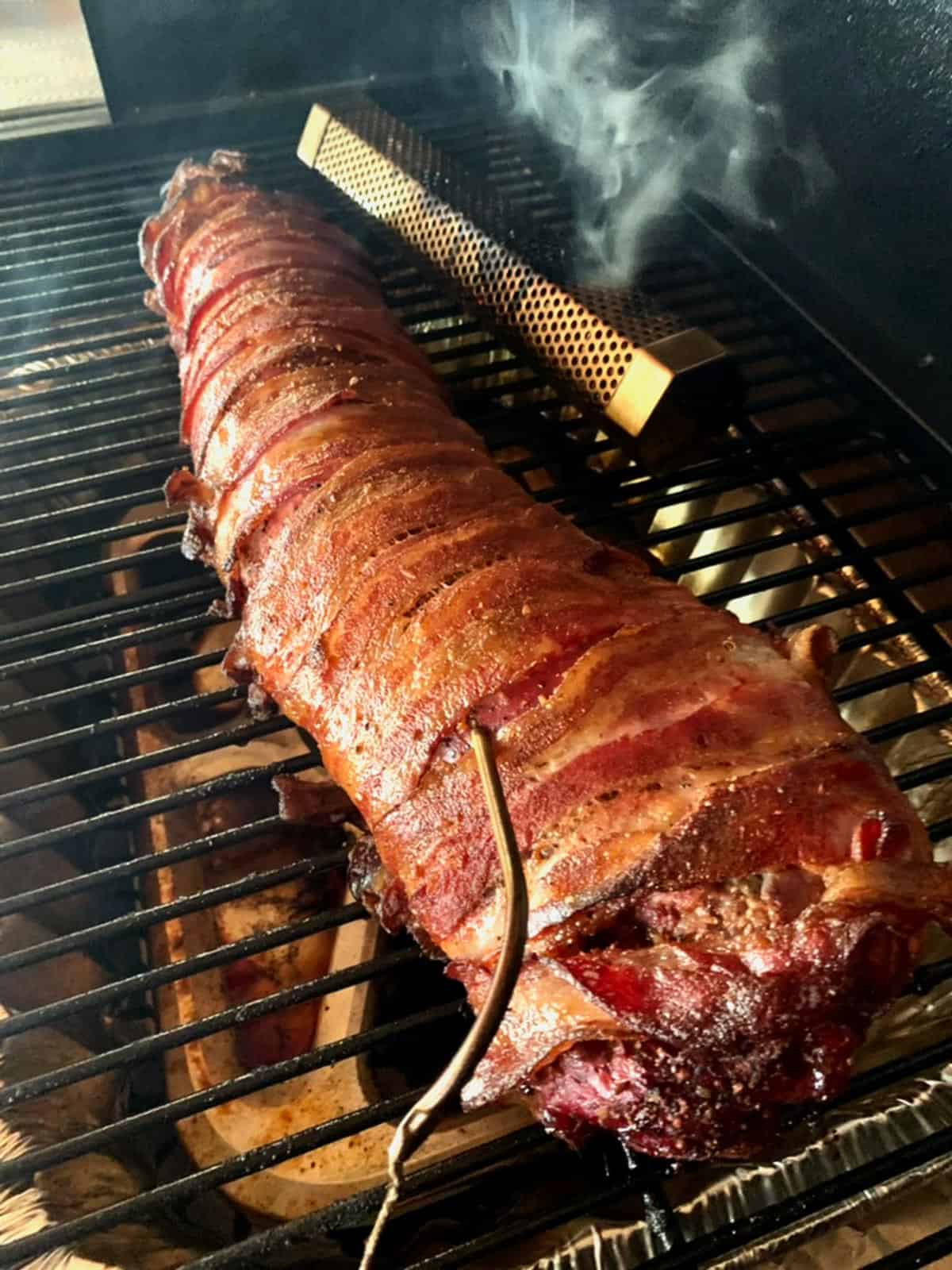
Once your smoker is ready, place the beef in the smoker and let it cook at a low temperature (around 225 degrees Fahrenheit) for a long time. Cooking time will depend on the size and cut of the meat, but larger cuts like a whole turkey or whole chicken can take up to 10 hours to cook.
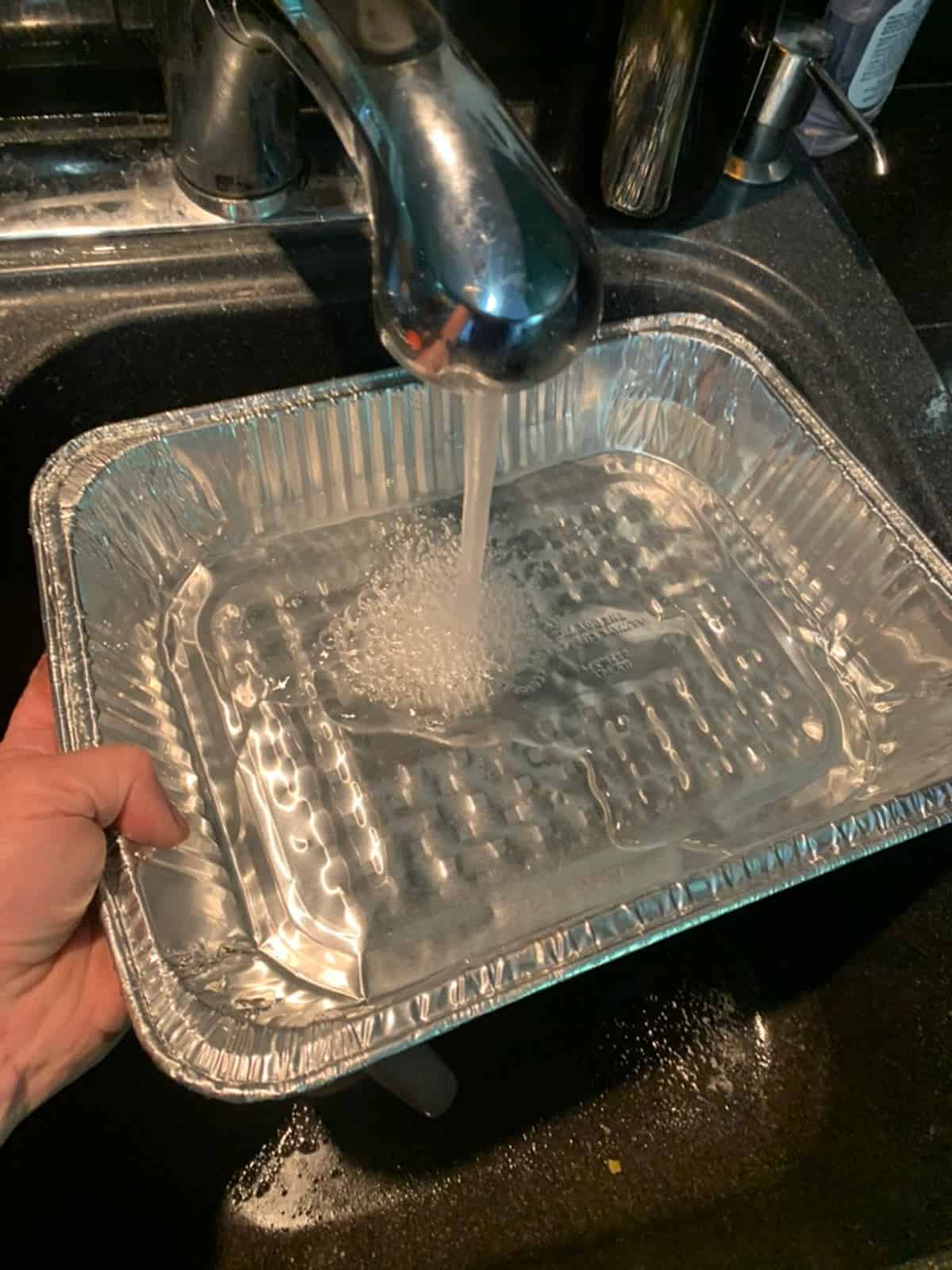
It’s important to use a meat thermometer to monitor the internal temperature of the meat, as different cuts require different internal temperatures to achieve the best results. For example, beef brisket is typically smoked to an internal temperature of 195-205 degrees Fahrenheit, while beef ribs can be smoked to a lower temperature of 165-175 degrees Fahrenheit.
When the meat is close to reaching the desired internal temperature, you can wrap it in aluminum foil or butcher paper to help retain moisture and continue cooking until it reaches the perfect temperature. This is especially helpful for tougher cuts like beef cheek or pork shoulder.
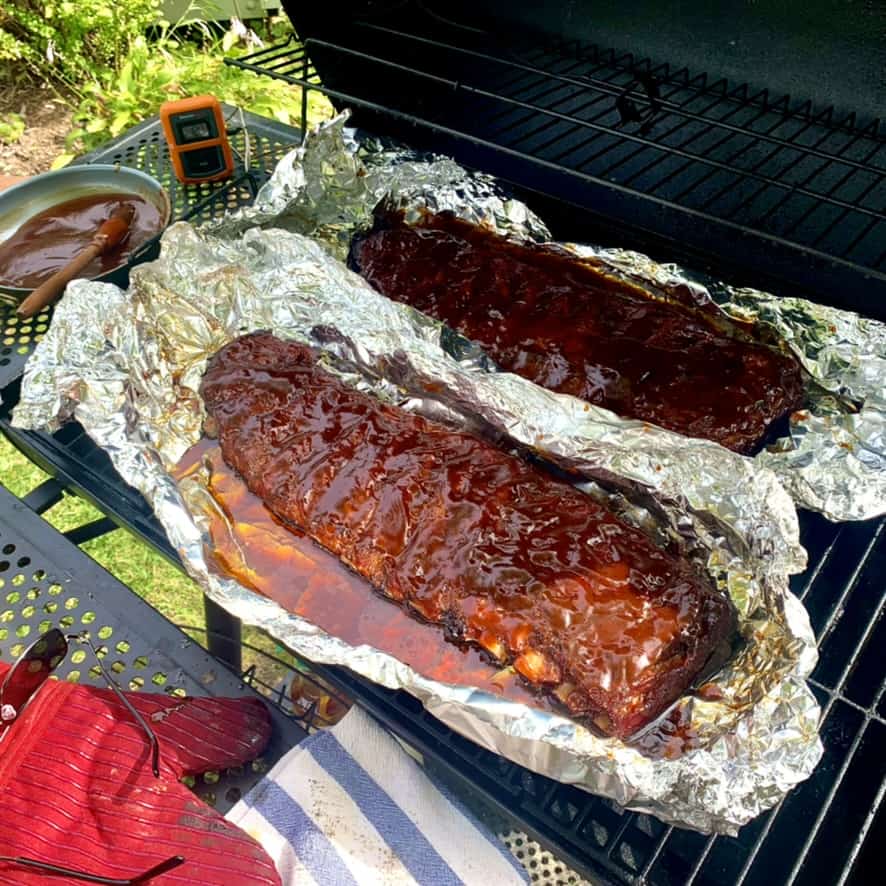
While beef cuts are the best meats for smoking, pork cuts like pork ribs, pork belly, and pork tenderloin are also great candidates for smoking. Smaller cuts like pork chops or baby back ribs are a great alternative if you don’t have as much time to devote to the smoking process.
No matter which cut of meat you choose, the most important thing is to let it cook slowly at a low heat to develop the best flavor. With the right cooking method, any cut of red meat can become a flavorful and delicious addition to your barbecue spread.
What goes with smoked beef?
If you’re wondering what to serve with smoked beef, the choices are many! In a word, think barbecue. What goes with barbecue?
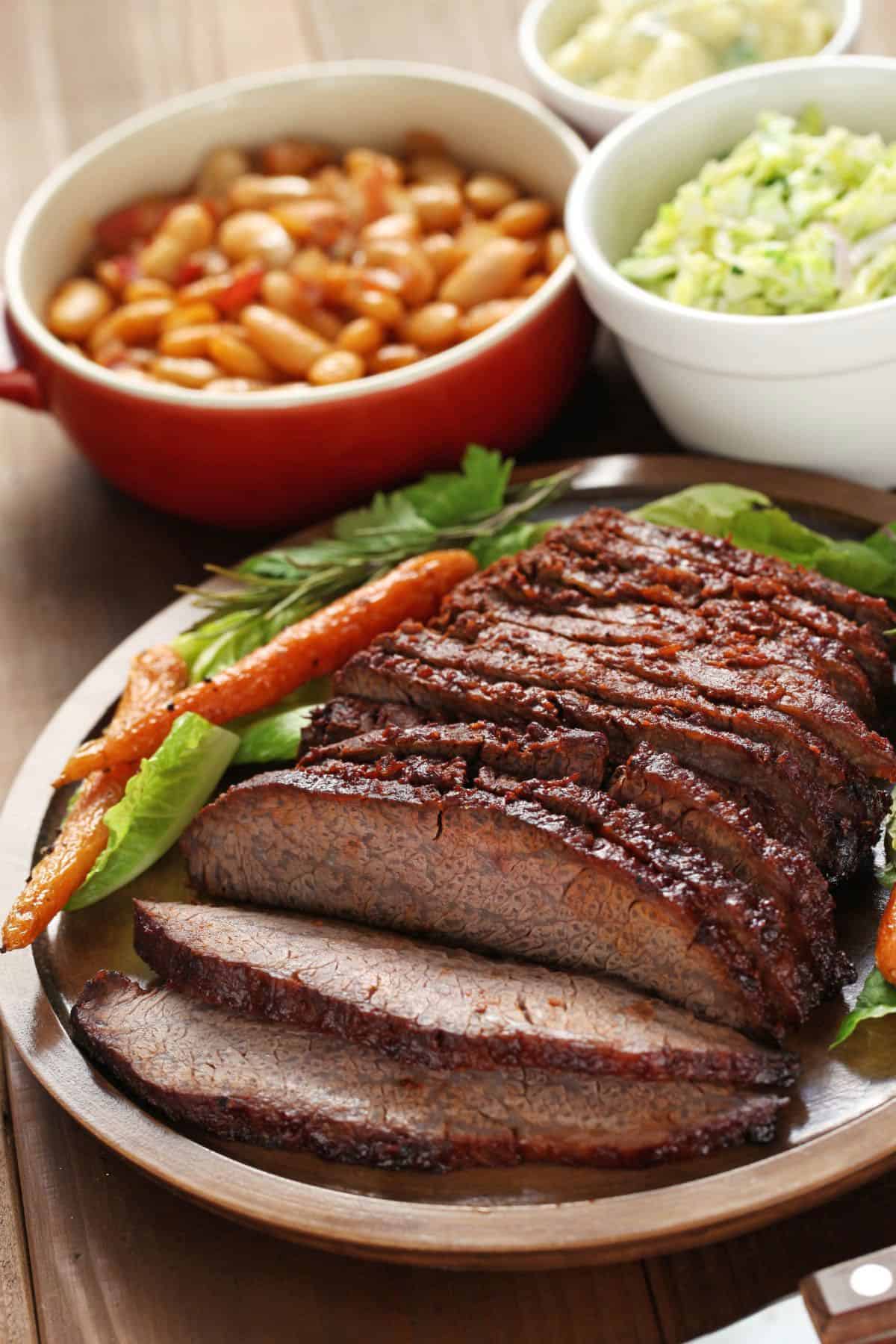
- BBQ sides: traditional barbecue sides such as coleslaw, potato salad, baked beans, and cornbread are all great options that pair well with smoked beef.
- Grilled vegetables: smoked beef can be paired with grilled vegetables such as zucchini, bell peppers, and asparagus, for a healthy and flavorful side dish. This grilled eggplant recipe is one of our favorites!
- Mac and cheese: a classic comfort food, mac and cheese is a delicious and indulgent side dish that pairs well with the rich flavor of smoked beef.
- Roasted potatoes: Crispy roasted potatoes are a simple and delicious side dish that can be flavored with herbs and spices to complement the smoky flavor of the beef. Make these in the oven or air fryer!
- Creamed spinach: creamed spinach is a rich and flavorful side dish that pairs well with the bold flavor of smoked beef.
- Corn on the cob: grilled or roasted corn on the cob is a classic side dish that pairs well with the smoky flavor of beef.
- Salad: a fresh and crunchy salad can be a nice contrast to the richness of smoked beef. Try a salad with mixed greens, tomatoes, cucumbers, and a tangy vinaigrette dressing.
- Bread: a fresh, crusty bread like our no-knead homemade crusty bread can be a great way to sop up any leftover juices or sauce from the smoked beef.
Overall, the best foods to serve with smoked beef will depend on personal preference and the specific flavor profile of the beef. Don’t be afraid to experiment and try different combinations until you find the perfect pairing for your smoked beef.
Related recipes
👨🍳 Tried this Recipe? Please leave a ⭐⭐⭐⭐⭐ rating in the recipe card below and leave a comment. We love hearing from our readers!
⏩ Stay in touch with us on social media by following us on Facebook, Pinterest, Instagram, and YouTube!
📬Get our Recipes delivered to your inbox for FREE!
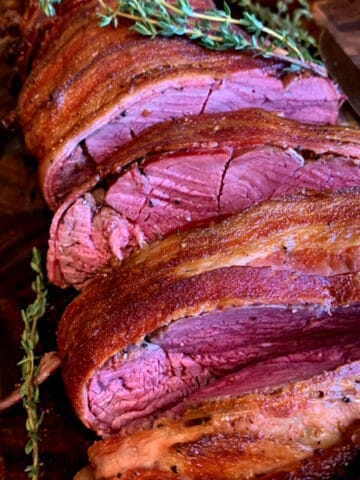
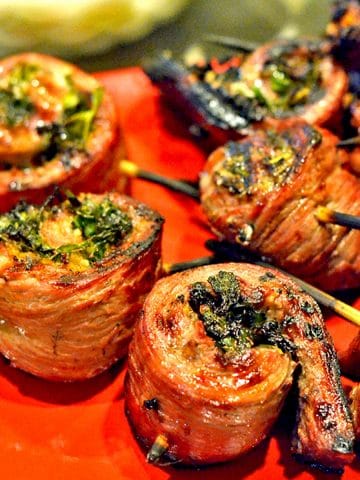
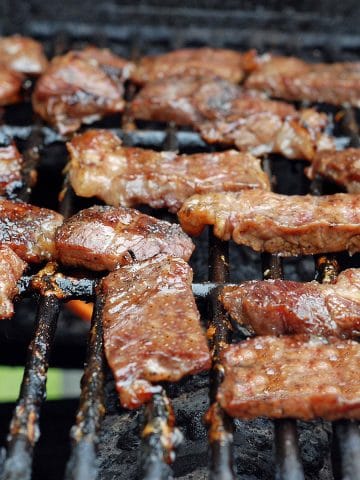
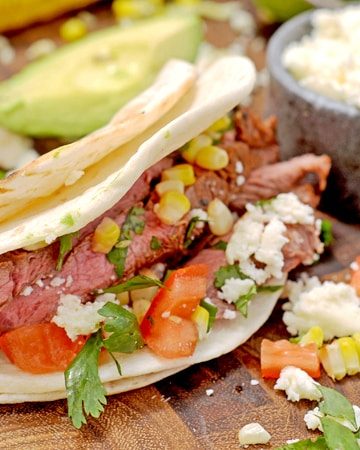
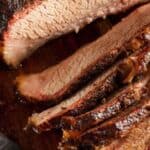
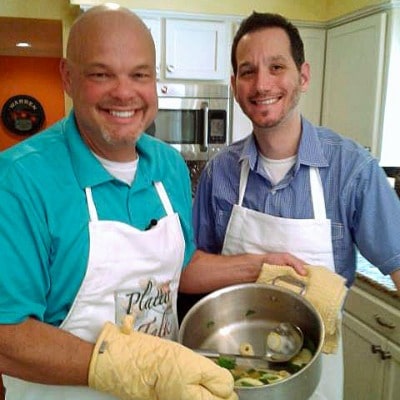











Thank you. It turned out just ok.
I am going to buy either a grill or smoker.
Since i dont own a grill or a smoker, can i add liquid smoke and bake?
Will the results be Simular?
Thank you
Hi Robin, you can certainly give that a try. Pay close attention to the internal temperature of the tenderloin!